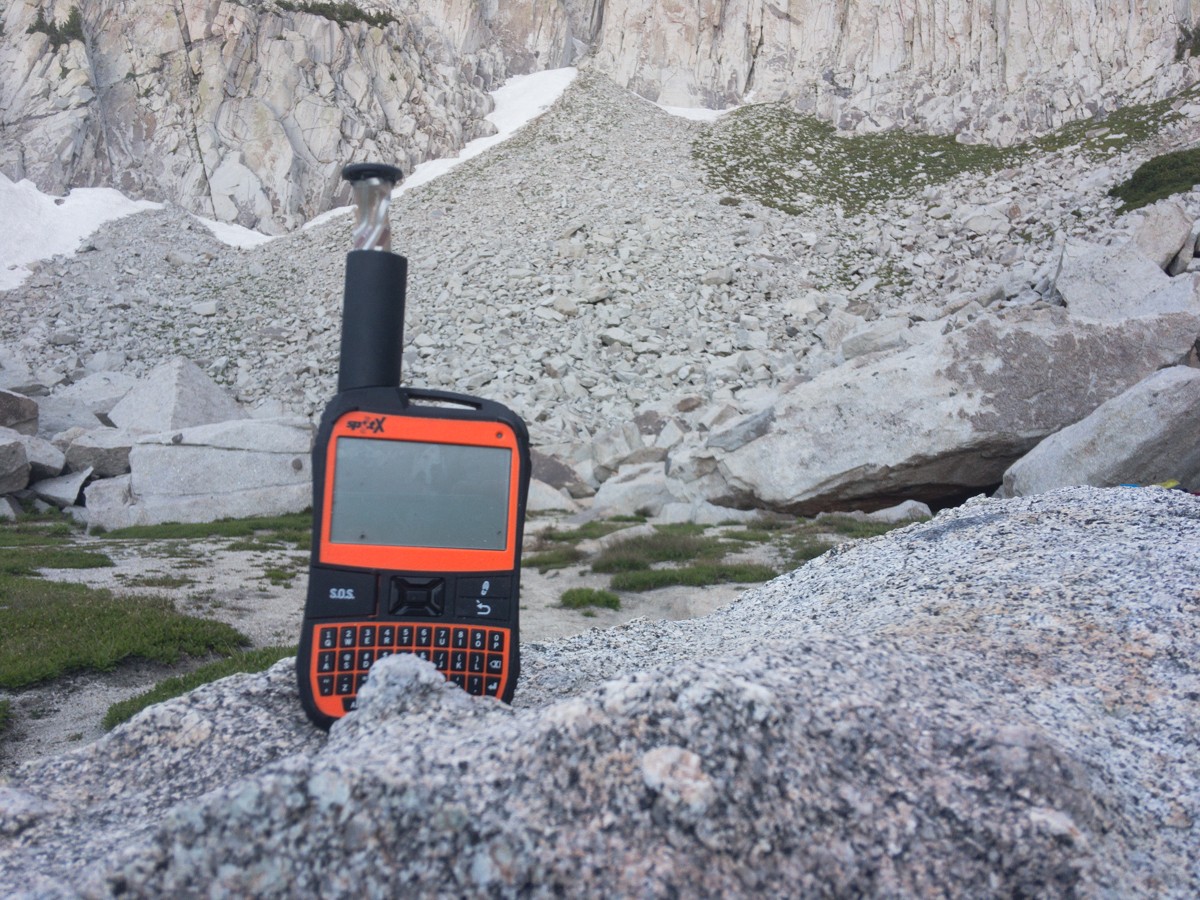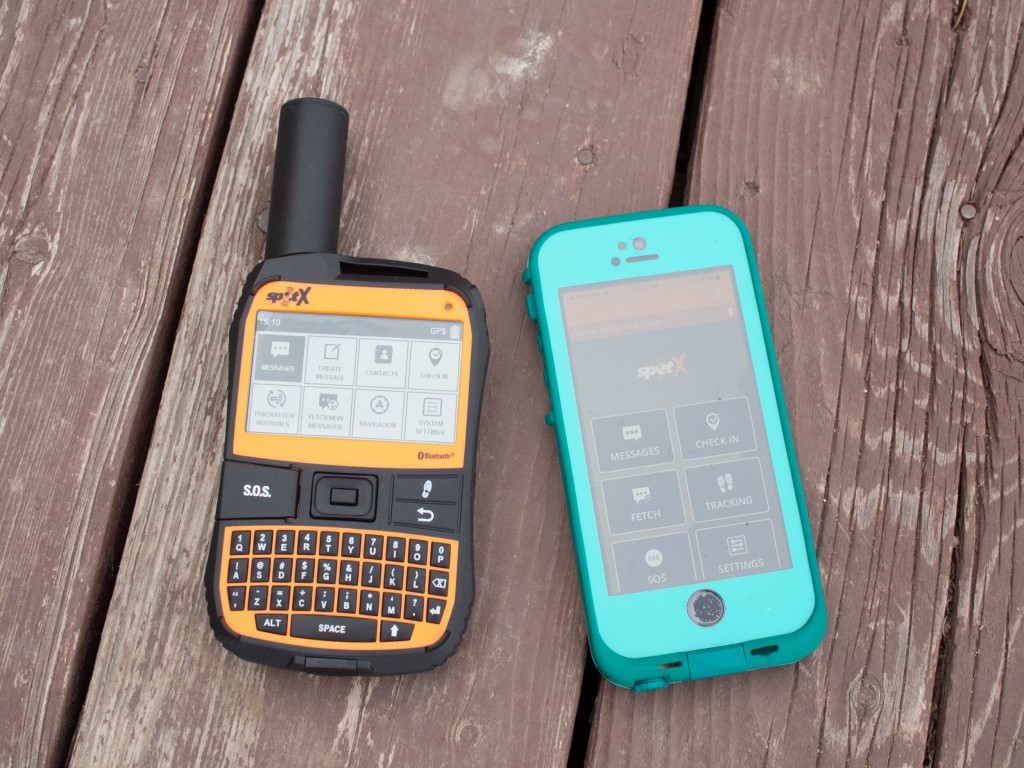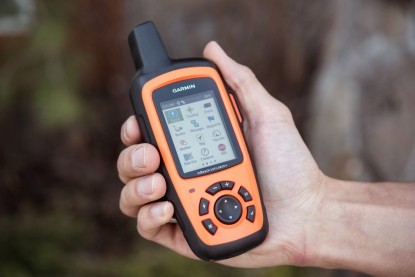Our Verdict
Compare to Similar Products
 This Product
SPOT X | |||||
|---|---|---|---|---|---|
| Awards | |||||
| Price | $199.89 at Amazon Compare at 3 sellers | $195.55 at Amazon Compare at 2 sellers | Check Price at Backcountry Compare at 3 sellers | $280 List | $359.95 at REI Compare at 2 sellers |
Overall Score  |
|||||
| Star Rating | |||||
| Bottom Line | If you want two-way texting that doesn't rely on a smartphone and tend to travel in the Americas and Europe, this one's is for you | A compact, full service satellite messenger that has all you need, and is close to all you would want | This is a smooth, comprehensive two-way communicator that relies on a proven satellite network and brings innovations that raise the bar | A small, basic device that employs established network, dispatch, and hardware systems through affordable subscription plans | A small, satellite-linked emergency communicator that is exactly what you need and nothing more |
| Rating Categories | SPOT X | ACR Bivy Stick | ZOLEO Satellite Com... | Somewear Global Hot... | Ocean Signal rescue... |
| SOS/Emergency Messaging (30%) | |||||
| Non-Emergency Messaging (25%) | |||||
| Signal Coverage (20%) | |||||
| Ease of Use (15%) | |||||
| Portability (10%) | |||||
| Specs | SPOT X | ACR Bivy Stick | ZOLEO Satellite Com... | Somewear Global Hot... | Ocean Signal rescue... |
| 2-way Messaging? | Yes | Yes | Yes | Yes | No |
| 2-way Messaging Available via Cellular/Wifi? | No | No | Yes | Yes | No |
| Custom Messaging Viewable and Composable on Device? | Yes | No | No | No | No |
| Passive Tracking (turn on and forget about it - viewers at home can watch your progress on the web) | Yes | Yes | No | Yes | No |
| Weight w/ Batteries | 6.8 oz | 3.6 oz | 5.3 oz | 4.1 oz | 4.0 oz |
| Battery Life | 240 hours | Up to 120 hours | 200+ hours when checking messages every 12 minutes | Up to 1000 messages | 24 hours |
| Waterproof Rating | IPX7 (No dust rating. Rain, splashing, and accidental submersion up to 30 minutes) | IP67 (protection from harmful dust. Rain, splashing, and accidental submersion up to 30 minutes) | IP68 (protection from harmful dust. Rain, splashing, and accidental submersion at least 30 minutes) | IPX7 (No dust rating. Rain, splashing, and accidental submersion up to 30 minutes) | No Formal Rating. Likely exceeds rating system. Claimed "Up to 15 meters" |
| Pairs with Smartphone? | Yes | Yes | Yes | Yes | No |
| Requires recipient to use a special app for two-way communications? | No | Yes | Yes | Yes | N/A |
| On Device Functions (if you lose or disable your smartphone) | All.Texting is slightly faster on smartphone. | SOS, check-in, tracking. All texting requires smartphone. | SOS, check-in. All texting requires smartphone | SOS. All texting requires smartphone app | All. |
| Satellite Network | Globalstar | Iridium | Iridium | Iridium | COSPAS/SARSAT |
| Dispatch service | Focus Point International | Global Rescue | GEOS | GEOS | COSPAS/SARSAT |
| Dimensions | 6.5" x 2.9" x 0.9" | 1.9" x .9" x 4.5" | 3.5" x 2.6" x 1.0" | 3" x 3.6" x .8" | 3.0" x 2.0" x 1.3" |
| Volume | 17 CU IN | 7.7 CU IN | 9.1 CU IN | 8.6 CU IN | 6.8 CU IN |
Our Analysis and Test Results
The SPOT X is a stand-alone two-way satellite messaging device. A few other devices we tested also allow for two-way, customized messaging, but they require a smartphone for easy typing. The SPOT's built-in QWERTY keyboard makes it stand out. You compromise nothing by using the X on its own. The latest version of the SPOT X includes Bluetooth functionality that links with a dedicated SPOT app on a smartphone for interfacing that way. This latest update truly sweetens the deal. If you have a SPOT X from before the Bluetooth update, it is worth trading yours in for the newer version.
Performance Comparison
SOS/Emergency Messaging
The SPOT network is contracted from Globalstar. Its emergency messaging capability has been proven now for a decade or so. The X has the same emergency messaging capabilities that many have come to love and trust. Activating the “SOS button” sends an emergency notification and your location information to a central, for-profit dispatch agency called “Focus Point International”. That agency then works to secure local rescue resources. We don't know much yet about Focus Point International.
What is unique about the X, compared to previous SPOT devices, is that you can also text back and forth with friends, family, or additional emergency services while your rescue is unfolding. This latter portion is outside the normal parameters of SOS messaging but can be very beneficial. In certain circumstances, the ability to communicate in both directions in an emergency may mean the difference between positive and negative outcomes.
Two-way messaging can further refine emergency response. It helps manage the stress of those involved in the incident and those at home — so they don't assume the absolute worst if your SPOT is activated. It can also let you provide more information to your rescue team for a more nuanced (and therefore likely better) emergency response.
Non-Emergency Messaging
For non-emergency messaging, the X is great. You can send and receive text-only messages (no photos) with ease. All sending, receiving, and viewing can be completed on the device itself or on the associated smartphone app.
You can configure the SPOT X to continuously monitor for new messages. Then it can sit in your pocket or pack like your cell phone would, receiving messages the whole time. Message speed is limited mainly by satellite reception, which we examine more closely below. Each text conversation is organized into familiar “thread” format, whether on the device or in the app. Conversing is intuitive and clear.
Signal Coverage
In our comparative testing, signal coverage is almost entirely determined by the network. The device size, design, or power do not have any appreciable impact on signal coverage. All SPOT devices, including the X, use the Globalstar satellite network. This web of lower altitude communication satellites covers only a portion of Earth.
Notably, all 48 contiguous states are well covered, and coverage elsewhere in North and South America and Europe is pretty good. Elsewhere it might work, but reliability is lower. Overall, SPOT devices offer below-average coverage. Consider this when you consider the SPOT. While the Globalstar network that SPOT taps into doesn't cover everywhere, it is entirely possible that it covers your intended travel area. Be honest about your travel habits and communication needs when shopping for a beacon or messenger. You might aspire to that polar trip, but the fact of the matter could be that the entirety of your adventures are in our beautiful Continental US national parks.
Ease of Use
Initially, using the X is a smooth and intuitive process. It doesn't take long to set up, and the subscription plans are fairly obvious and simple. The large screen and integrated keyboard simplify sending and receiving messages. The smartphone app features a user interface that is similar to that of the device itself but employs touch screen function and your familiar smartphone keyboard and text entry.
In ongoing testing and upgrading of the SPOT X, we have had a few service and support issues that are worth pointing out. First, with the original non-Bluetooth SPOT X, we had trouble updating the firmware. A couple of hours of tech support phone time yielded zero progress. Finally, we gave up and bought the new SPOT X with Bluetooth. The timing was right, as our other device wasn't working at all. When the new one arrived, it also was due for a firmware update. We followed the instructions closely but were unable to update this one as well. After another hour or so of time on the phone with SPOT tech support, we had no luck updating the firmware. That phone call ended with no resolution and the advice to “just try again in an hour or so.” We only achieved success and a usable product when we took the initiative, prompted by only the vaguest suggestion from tech support, to try a different computer for conducting the firmware update. After weeks of delay and tech difficulties, we had a usable SPOT X and like its function. However, our customer service and tech support experience was poor to mediocre. We hope this is an issue that has been resolved all around, but proceed with caution.
Portability
The X is about the size of an adult palm with one short finger as the antenna. It weighs 6.8 ounces with batteries. For what it does, this degree of portability would have been amazing just a couple of months ago.
Today the smallest available devices make the compact stature of the X seem bulky. The difference between the size of the SPOT X and the smallest competitor is an important threshold. Universally, trail runners, multi-pitch rock climbers, and day-trip mountain bikers deem the SPOT X too big. The smaller competitors pass an important line and are considered small and light enough to be carried everywhere, all the time. Of course, if the unique functionality of the SPOT X appeals to you, you will justify carrying the greater mass and bulk.
Should You Buy the SPOT X?
This is the only two-way messenger on the market with a physical keyboard, which is great for those that don't like to use their smartphone screen in the wilderness. With practice, the “Blackberry” style keyboard is as fast as, if not faster than, the smartphone app option. By letting you step away from your smartphone, the X fills a niche that some people will prefer.
What Other Personal Locator Beacons Should You Consider?
If you'll use your smartphone anyway, many other options on the market will do all that the SPOT X does and also take up less space. These other options also have better signal coverage. The Garmin inReach Messenger or Garmin inReach Mini 2 are overall a bit better. The ACR Bivy Stick, Zoleo, and Somewear Global Hotspot all do what the SPOT X does in a smaller form with better satellite network function. The satellite SOS messaging of the iPhone 14 uses the same network as the SPOT X.


















